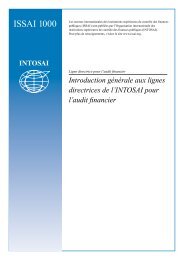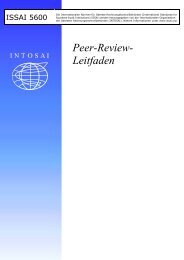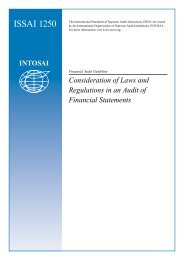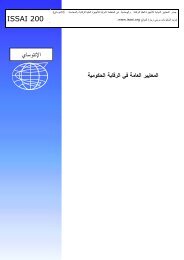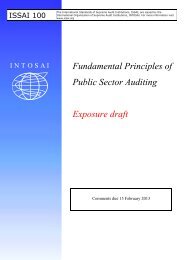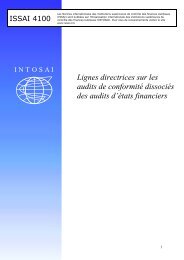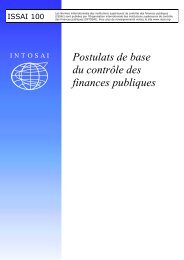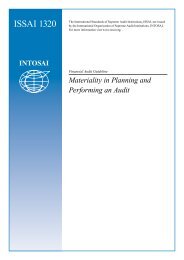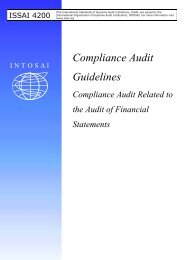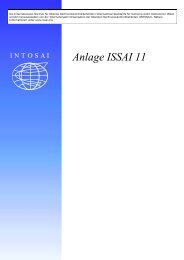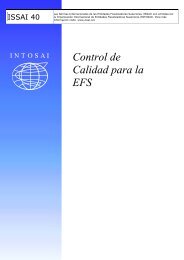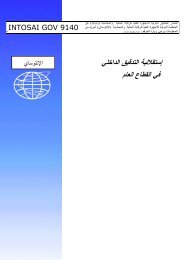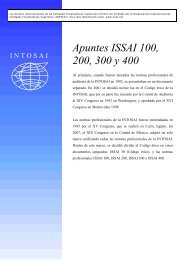ISSAI 1240
ISSAI 1240
ISSAI 1240
Create successful ePaper yourself
Turn your PDF publications into a flip-book with our unique Google optimized e-Paper software.
<strong>ISSAI</strong> <strong>1240</strong><br />
ISA 240<br />
THE AUDITOR’S RESPONSIBILITIES RELATING TO<br />
FRAUD IN AN AUDIT OF FINANCIAL STATEMENTS<br />
Appendix 2<br />
(Ref: Para. A40)<br />
Examples of Possible Audit Procedures to Address the<br />
Assessed Risks of Material Misstatement Due to Fraud<br />
The following are examples of possible audit procedures to address the assessed risks of<br />
material misstatement due to fraud resulting from both fraudulent financial reporting<br />
and misappropriation of assets. Although these procedures cover a broad range of<br />
situations, they are only examples and, accordingly they may not be the most<br />
appropriate nor necessary in each circumstance. Also the order of the procedures<br />
provided is not intended to reflect their relative importance.<br />
Consideration at the Assertion Level<br />
Specific responses to the auditor’s assessment of the risks of material misstatement due<br />
to fraud will vary depending upon the types or combinations of fraud risk factors or<br />
conditions identified, and the classes of transactions, account balances, disclosures and<br />
assertions they may affect.<br />
The following are specific examples of responses:<br />
• Visiting locations or performing certain tests on a surprise or unannounced basis.<br />
For example, observing inventory at locations where auditor attendance has not<br />
been previously announced or counting cash at a particular date on a surprise basis.<br />
• Requesting that inventories be counted at the end of the reporting period or on a<br />
date closer to period end to minimize the risk of manipulation of balances in the<br />
period between the date of completion of the count and the end of the reporting<br />
period.<br />
• Altering the audit approach in the current year. For example, contacting major<br />
customers and suppliers orally in addition to sending written confirmation, sending<br />
confirmation requests to a specific party within an organization, or seeking more or<br />
different information.<br />
• Performing a detailed review of the entity’s quarter-end or year-end adjusting<br />
entries and investigating any that appear unusual as to nature or amount.<br />
• For significant and unusual transactions, particularly those occurring at or near<br />
year-end, investigating the possibility of related parties and the sources of financial<br />
resources supporting the transactions.<br />
• Performing substantive analytical procedures using disaggregated data. For<br />
example, comparing sales and cost of sales by location, line of business or month<br />
to expectations developed by the auditor.<br />
40<br />
The Auditor’s Responsibilities Relating to Fraud in an Audit of Financial Statements 275



